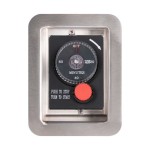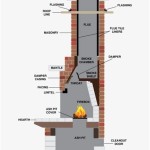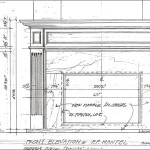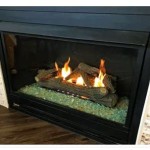Outdoor Wood Fireplaces: Design, Functionality, and Considerations
Outdoor wood fireplaces offer a compelling combination of ambiance, warmth, and cooking capability, transforming patios and backyards into inviting social spaces. This article explores the various aspects of outdoor wood fireplaces, covering design options, functional considerations, and important factors to consider before installation. From prefabricated units to custom-built structures, understanding the nuances of these outdoor features is crucial for a successful and enjoyable experience.
The appeal of an outdoor wood fireplace stems from its ability to create a focal point that encourages gathering. The crackling sound of burning wood, the flickering flames, and the comforting warmth it radiates contribute to a relaxed and inviting atmosphere. Beyond aesthetics, these fireplaces can extend the usability of outdoor spaces into cooler months, allowing for year-round enjoyment. Moreover, the possibility of cooking over an open flame adds another dimension to the outdoor experience, fostering a sense of connection to nature and traditional cooking methods.
Design Variations and Material Choices
Outdoor wood fireplaces are available in a wide array of designs, catering to diverse architectural styles and personal preferences. Prefabricated units offer a relatively straightforward installation process and often come with a variety of aesthetic options. These units are typically constructed from materials like concrete, metal, or a combination thereof, and are designed for easy assembly and placement.
Custom-built fireplaces, on the other hand, provide greater design flexibility. They can be tailored to perfectly match the existing landscape and architectural style of the property. Common materials used in custom construction include brick, stone, concrete block, and stucco. The choice of materials significantly impacts the overall look and feel of the fireplace, as well as its durability and maintenance requirements.
Brick offers a classic and timeless aesthetic, renowned for its durability and heat retention properties. Stone provides a more rustic and natural look, blending seamlessly with outdoor environments. Concrete block, often used as a structural base, can be finished with various veneers to achieve the desired appearance. Stucco, a versatile and affordable option, can be applied over a variety of surfaces to create a smooth and modern finish.
Beyond the primary construction materials, details such as the firebox lining, chimney design, and hearth material contribute to the overall aesthetic and functionality of the fireplace. Firebox linings, typically made of firebrick, protect the structural components from the intense heat of the fire. Chimney designs vary from simple straight stacks to more elaborate structures with decorative caps. The hearth, the area in front of the firebox, provides a non-combustible surface to protect the surrounding area from sparks and embers. Common hearth materials include brick, stone, and concrete.
Functionality and Performance Considerations
The functionality of an outdoor wood fireplace extends beyond its aesthetic appeal, encompassing factors such as heat output, draft efficiency, and safety features. The size of the firebox directly influences the amount of heat generated. A larger firebox can accommodate more wood, resulting in a more substantial and longer-lasting fire. However, a larger firebox also requires more wood and may produce more smoke if not properly designed.
Draft efficiency is crucial for proper combustion and minimizing smoke production. A well-designed chimney creates a natural draft that draws air into the firebox, providing oxygen for combustion and carrying smoke and gases away from the area. Chimney height, diameter, and internal smoothness all contribute to draft efficiency. Obstructions such as trees or nearby buildings can negatively impact draft, requiring adjustments to chimney design or location.
Safety features are paramount in outdoor wood fireplace design. A spark arrestor, installed at the top of the chimney, prevents embers from escaping and potentially igniting surrounding vegetation or structures. A screen or door covering the firebox opening prevents sparks and embers from popping out and creating a fire hazard. Proper clearance from combustible materials, such as wood siding or roofing, is essential to prevent accidental fires.
Furthermore, the location of the fireplace should be carefully considered to minimize the impact of smoke on neighbors and to avoid potential hazards. Prevailing wind patterns should be taken into account when determining the optimal placement. Regular maintenance, including chimney cleaning and inspection, is necessary to ensure safe and efficient operation.
Planning and Installation Considerations
Planning and installation of an outdoor wood fireplace involve several crucial steps, including site assessment, permitting, and construction. Before commencing any construction, a thorough site assessment should be conducted to evaluate soil conditions, drainage patterns, and proximity to utilities and property lines. Unstable soil conditions may require additional foundation work to ensure the stability of the fireplace structure. Proper drainage is essential to prevent water damage and erosion.
Permitting requirements vary depending on local regulations and zoning ordinances. Most municipalities require permits for outdoor structures, including fireplaces. It is essential to consult with local authorities to determine the specific requirements and obtain the necessary permits before starting construction. Failure to obtain proper permits can result in fines and delays.
The construction process itself requires careful attention to detail and adherence to building codes. A solid foundation is essential to support the weight of the fireplace structure. Proper mortar techniques are crucial for ensuring the structural integrity of brick or stone construction. Firebrick lining must be installed correctly to protect the surrounding materials from the intense heat of the fire.
Professional installation is recommended, particularly for complex designs or when dealing with gas or electrical connections. Experienced contractors have the knowledge and expertise to ensure that the fireplace is installed safely and efficiently, meeting all applicable codes and regulations. A professional installation can also provide peace of mind, knowing that the fireplace is built to last and will function properly for years to come.
In addition to the structural aspects of the fireplace, consideration should be given to landscaping and surrounding features. Creating a comfortable seating area around the fireplace enhances the overall outdoor experience. Adding features such as built-in benches, retaining walls, or planters can further enhance the visual appeal and functionality of the space. Proper lighting can also create a warm and inviting atmosphere, extending the usability of the outdoor space into the evening hours.
Choosing the right type of wood is important for a safe and enjoyable fire. Seasoned hardwoods, such as oak, maple, and ash, burn hotter and longer than softwoods, such as pine and fir. Seasoned wood has a lower moisture content, resulting in less smoke and creosote buildup in the chimney. Avoid burning treated wood, painted wood, or construction debris, as these materials can release harmful toxins into the air.
Responsible use of an outdoor wood fireplace involves practicing fire safety and respecting neighbors. Never leave a fire unattended, and always have a fire extinguisher or water source nearby. Be mindful of smoke emissions and avoid burning during periods of high winds or air quality alerts. Store firewood properly to prevent pests and moisture buildup. By following these guidelines, one can enjoy the warmth and ambiance of an outdoor wood fireplace while minimizing the risks and potential nuisances.

Outdoor Lifestyles Cottagewood Wood Fireplace Fireside Hearth Home

Outdoor Fireplace Kits Masonry Stone

42 Castlewood Outdoor Wood Burning Fireplace Fine S Gas

Outdoor Wood Fireplaces Jetmaster

Outdoor Fireplace Builder Richmond Va Dreams

Outdoor Fireplaces Charlotte Fireplace Design Coogans Build

Suoy Curtis 56 69 In Wood Burning Outdoor Fireplace With Broe Highlights 169476 The Home Depot

Majestic Montana 42 Outdoor Wood Fireplace Traditional Brick Colorado Hearth And Home

Gas Logs Vs Wood Burning Outdoor Fireplaces Green Okie

50 Large Outdoor Real Masonry Wood Burning Fireplace Fine S Gas
Related Posts








